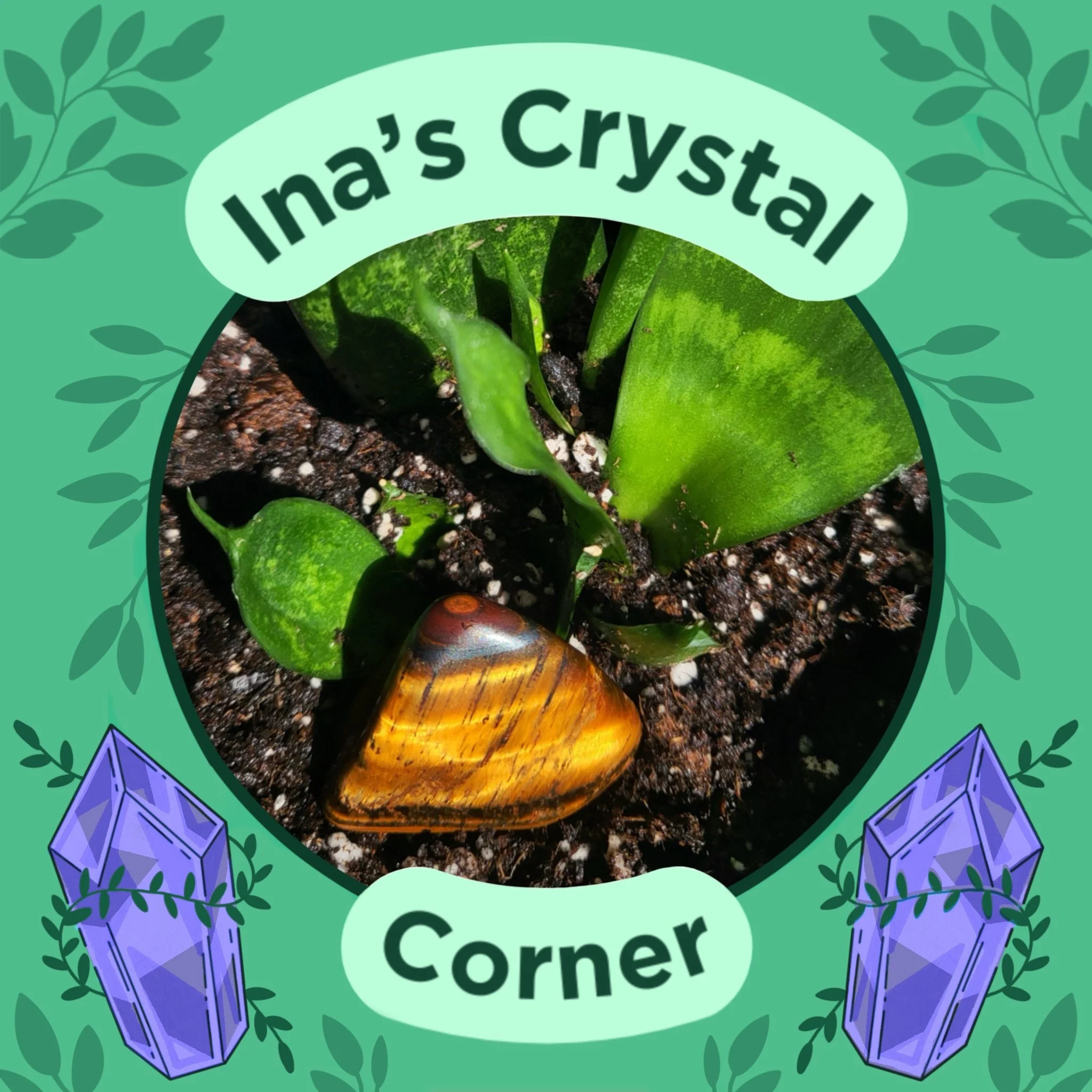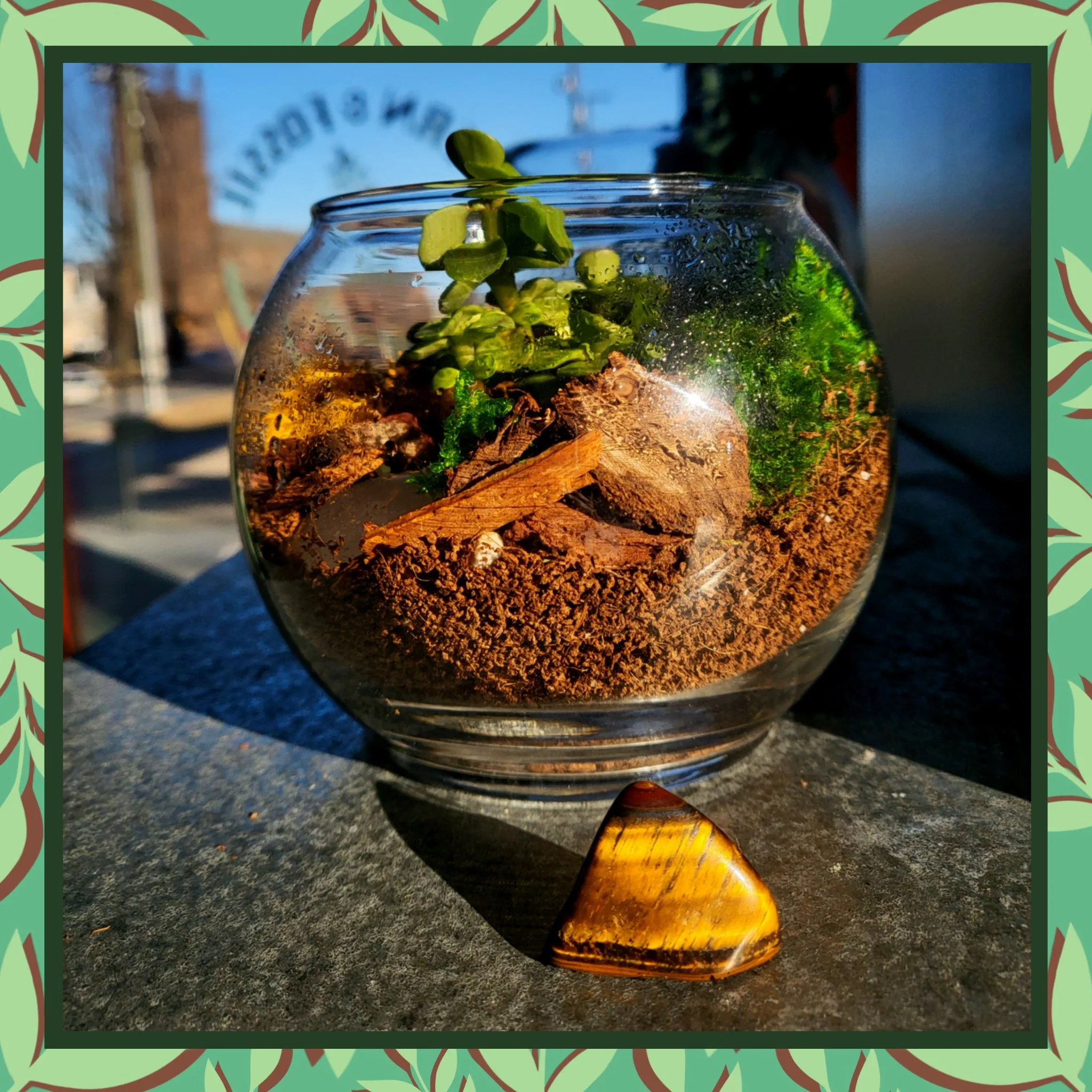Ina’s Crystal Corner: Tiger’s Eye
We’re back with Ina’s Crystal Corner and ready to learn all about Tiger’s Eye. This crystal is commonly sourced from many places including Australia, Burma, India, Namibia, South Africa, the United States, Brazil, Canada, China, Korea and Spain. Of all the crystals in my collection at home (and I have quite the assortment), Tiger’s Eye is easily in my top 3. Much like my favorite crystal (Labradorite), Tiger’s Eye has a gorgeous iridescent appearance with rich bronze and golden bands of color that shift in the light. In gemology, this reflective and shimmery quality is referred to as chatoyancy or chatoyance and is coined from French for “Cat’s Eye”. Other chantoyant gemstones include certain varieties of quartz, beryl (particularly aquamarine), tourmaline, moonstone, and selenite. Tiger’s Eye falls under the category of quartz crystal and thus as a silica mineral, it’s a great addition to your indoor gardening! Silica is viewed as a “superfood” for plants. Silica minerals are beneficial as they’ve been shown to speed up growth rates, increase a plant’s nutrient absorption, and boost pest resilience leading to stronger healthier plants. Although a single tiger’s eye crystal ornament won’t yield these benefits overnight, they boost plant happiness over time (and ours, we love seeing thriving plants here! Plus isn’t the tiger’s eye so shiny and eye-catching?)
In terms of the spiritual properties, tiger’s eye has been considered a protective stone across time and cultures. It’s mirror-like characteristics are thought to reflect negative energies away. As a practicing witch, I personally like to use them in “return to sender” spells and to ward off any negative energy thrown my way from others throughout the day. This crystal has been used since as far back as Ancient Egypt as a protective tool. Ancient Egyptians associated the stone with Ra, God of the Sun, and Geb, God of the Earth thanks to its golden coloring similar to sunlight. We can see amulets and talismans that would have been worn by pharoahs and priests in museums today. The Egyptians also related the sun with prosperity and life, leading them to associate tiger’s eye with luck and success. Later in history we see the Romans using the stone in battle. It was thought that tiger’s eye would help boost soldier’s confidence and bravery. Tiger’s Eye has also been used in India to balance the solar plexus and root chakra. These chakras are associated with personal power, survival, and emotional stability. Wearing tiger's eye is thought to bring good fortune. Today, tiger’s eye is usually associated with the zodiac signs Leo & Capricorn. Both of these signs embody qualities of perseverance, determination, and ambition. Tiger’s eye helps one tap into their resources, create opportunities, increase luck, and provides the conviction to follow through on one’s goals, particularly for those with heavy Leo or Capricorn placements in their birth chart (for those that are interested in astrology). I find that as someone with several significant placements in both signs, tiger’s eye has a very grounding effect on me.
🔮 The Verdict on Tiger’s Eye 🔮
🌱 Safe for Gardening
🌙 Great for Protection, Luck, Confidence, Grounding, & Attracting Abundance
⭐⭐⭐⭐⭐
*As always, a disclaimer that I am NOT a spiritual advisor here and only seek to provide others with knowledge on how crystals may affect their plants and vice versa*





